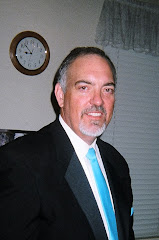Today I would like to write a little more about culture, which I have written about in a previous blog (May 29th). As I noted in that blog, culture might most simply be defined as “the way we do things around here” and that it is typically built organically over time as the cumulative result of decisions and actions taken to solve issues as they arise.
What I would like to explore today is the idea that an organization (business, non-profit, school, church, family) might be able to “jump start” the development of culture through conscious, deliberate thought and action.
Suppose that the members of an organization took the time to carefully and deeply discuss their most closely held individual values, the values that if lived would most likely cause the organization to succeed in its goals, and where there might be differences between any individual values and the organizational ideal. Suppose further that this group was able to reach an agreement not only on the organizational ideal value set but for each value how those values would be expressed in behavior.
Let’s say the ideal value was “Act with integrity.” The group would explore and eventually agree about how they would act with each other, with clients or customers, with vendors and suppliers, and with the general public. They would not, most likely, be able to define every type of interaction that could occur within themselves of between their group and others. They probably could, however, identify and define key interactions that could serve as a benchmark for other undefined behaviors.
Once agreement had been reached by the group on ideal values and the behavioral expression thereof, let’s further suppose that in a caring, supportive environment, organizational members worked with each other to identify when behaviors that reinforced the ideal values were observed and times where a behavior breached those values. In the first case, those behaviors were lauded; in the second case, lapses were identified and more appropriate ways of behaving or dealing with those issues were discussed and agreed upon.
If such a scenario were played out in the real world, what would happen? I believe what you would see is the development of an identifiable culture built on the values and behaviors the organizational members had determined were most important. Further, if they were correct in identifying those values and behaviors, not only would an identifiable organizational culture be established but it would be making progress towards the objectives the organization held most dear.
Okay, assuming that my thought experiment is true, what are the implications? For one thing, an organization that wants to become excellent would now have a path to follow to achieve that goal. Another example where this could be very applicable is in an organization that operates multinationally or whose membership is multi-cultural and where there is a desire to have one unified organizational culture that transcends national or regional culture.
Not that such a process would be easy; just getting agreement on the most important values and associated behaviors would be a tremendous undertaking. There would no doubt be those who would resist this effort or see it as “soft” or a waste of time. There would be those, particularly in the example of the multinational organization that would chauvinistically cling to the attributes of their native culture as the ideal, rather than being open to other behaviors that might actually be more likely to achieve the organizational goals. There would surely be those who would say that overtly creating a culture is not possible, that people are who they are and they are not going to change.
In reality, people make conscious changes all the time. Such change is dependent on three things. First there needs to be a clear purpose or outcome in mind, which is considered to have great enough value to be desired more than the status quo and to overcome the fear of change. Second, the process to achieve the change is understood. Finally, there must be a fundamental belief that change can occur (that they are not predetermined to a certain life by fate, God, or the universe). If these three conditions are met, change, even profound change, can occur and occur quite quickly.
The question is, do those variables required for change exist? I would guess that in most organizations excellence and why it is worth pursuing is neither known nor discussed. Perhaps that is the place to start. For your organization, what does excellence look like and why is it important? In the words of Mike Myer’s character, Linda Richman in the Coffee Talk sketch from Saturday Night Live, “Talk amongst yourselves.”
Farewell to Twitter
1 year ago



